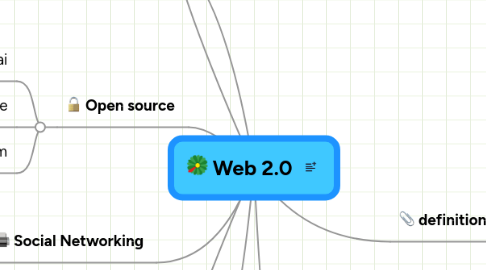Web 2.0
af chun YU


1. Social bookmarking
1.1. Common features
1.1.1. Clouds
1.1.2. Tagging, ranking and commenting
1.1.3. Management and sharing of bookmarks
1.1.4. Digging
1.1.5. Subscription
1.1.6. Integration with browsers and other web sites
1.1.7. Social networking
1.1.8. Reusability
1.2. Tools
1.2.1. Connotea
1.2.2. LibraryThing
1.2.3. Clipmarks
1.2.4. CiteULike
1.2.5. Del.icio.us
2. Social Repositories
2.1. Tools
2.1.1. Youtube
2.1.2. TeacherTube
2.1.3. Slideshare
2.1.4. Flickr
2.2. Common features
2.2.1. Sharing of digital content, private or public
2.2.2. Quick capture of digital content
2.2.3. Ranking, tagging and commenting
2.2.4. Management of favorites and creating playlists
2.2.5. Digging
2.2.6. Subsciption
2.2.7. Reuse
2.2.8. Social networking
2.2.9. Avtive sharing and streams
2.2.10. Access to mobile devices
3. Blog
3.1. Web-based publication
3.2. No technical skills to create your own blog
3.3. Contain text, media, links
4. Social Networking
4.1. Yackpack
4.2. ZOHO
4.3. EBAY
4.4. Google
4.5. AirSet
4.6. Friendster
4.7. Myspace.com
5. Wiki
5.1. Allows collaborative development on an article of common interest to its authors
6. Open source
6.1. Sakai
6.2. SourceForge
6.3. Moodle.com
7. definition
7.1. New forms of expressions
7.2. User control of information
7.3. Web as a point of presesnce
7.4. Internet-mediated social environments
7.5. Rich user experiences
7.6. Web as a platform
7.6.1. Microsoft
7.6.2. Google
7.6.3. ZOHO
